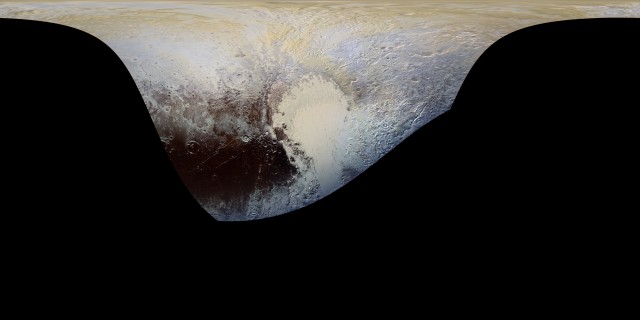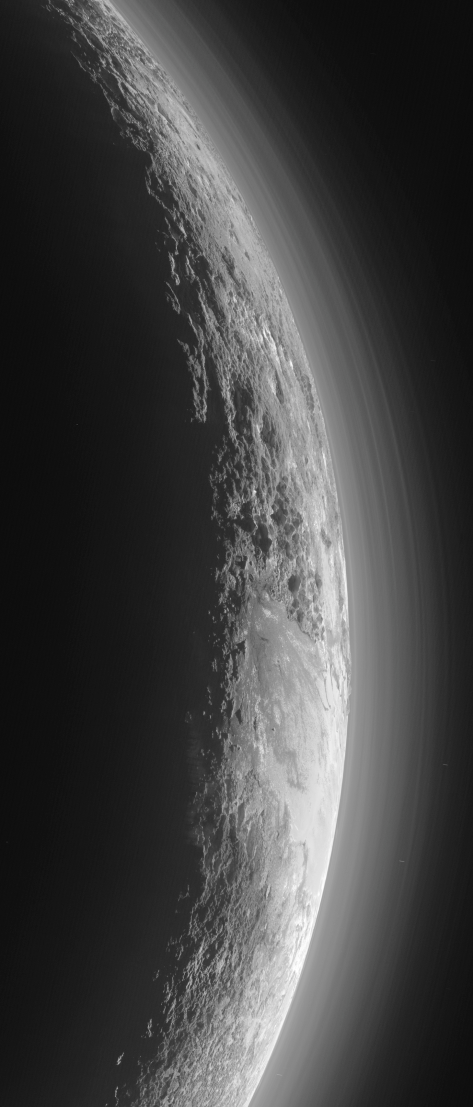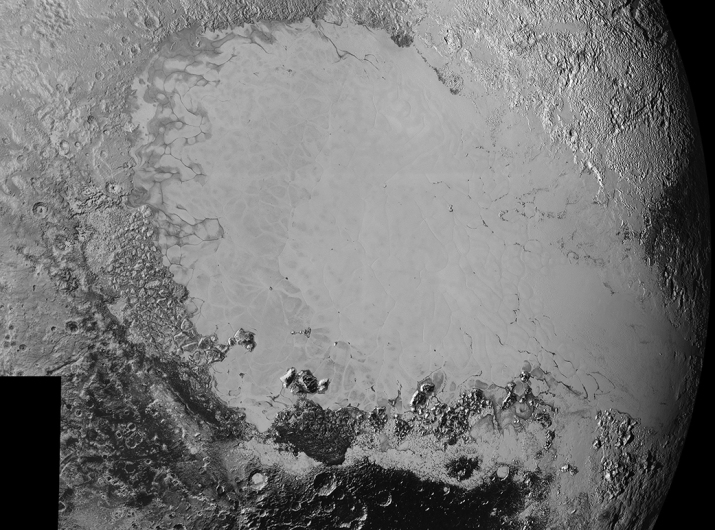Good morning, readers!
I apologize for the long break. I started a new job this week, and then, unluckily, fell ill. It’s been a tad bit hectic. For now, I have some new photos of Pluto from NASA’s New Horizons mission. The first is stunning–a large swath of land that has a “snakeskin-like” texture due to some mystifying geological formations of some sort. Scientists are still working on what could create such formations. The mountainous region has been named (informally, at the moment) the Tartarus Dorsa. Check it out:
The second is a lovely, detailed panorama of part of the Sputnik Planum, showing close up details of craters and mountains. And it’s close–the image is only 330 miles across. Make sure to click on it to see larger resolution.
Finally, there is the most detailed color of Pluto we have yet received, and it has enormous potential for helping scientists to determine the geological and climate history of the dwarf planet. You can see the Sputnik Planum there in the middle, and the Tartarus Dorsa in the middle right:
Enjoy the photos! I hope to be posting some solid content soon. Thanks for checking in!
Image credits: NASA/JHUAPL/SWRI








